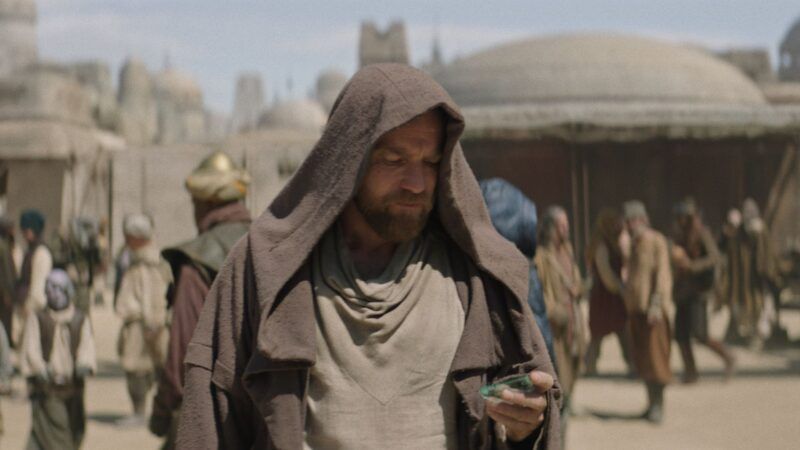Obi-Wan Kenobi and the Era of Cultural Stagflation
On streaming and the big screen, we're paying more for less, even as new ideas seem few and far between.

Watching the finale to Obi-Wan Kenobi on Disney+ this week, with its grating mix of canned nostalgia and self-defeating grandiosity, I was reminded of New York Times columnist Ross Douthat's argument that America has entered an age of decadence, effectively squandering its cultural and social inheritance.
But in some ways what we're seeing now is something more than mere decadence. And, given the political-economic moment we're in, I couldn't help but think of the famous remark by former British Chancellor of the Exchequer Iain Macleod, who in 1965 told Parliament: "We now have the worst of both worlds, not just inflation on the one side or stagnation on the other, but both of them together. We have a sort of 'stagflation' situation."
Forget, for a moment, American politics and our struggling economy: We live in an era of cultural stagflation.
The stagnation is perhaps the more obvious of the mix. It's not just that Obi-Wan Kenobi is the latest spinoff of Star Wars, a franchise that has reigned over Hollywood since the late 1970s. It's that over the last month, the feature film business has been dominated by sequels and spinoffs to movies from the 1980s and 1990s: Top Gun: Maverick, a follow-up to a 1985 hit; Jurassic World Dominion, a haphazard sequel to a 1993 dino-blockbuster; and Lightyear, which rather awkwardly harkens back to its 1995 source material, Toy Story. And this year, the biggest hits have come from familiar properties—not just sequels, but franchises and characters and universes that have been camping out in the popular consciousness for decades.
Of this quartet, only Maverick was a real creative success. Lightyear, which took a likable Toy Story toy and built out a bland in-universe sci-fi movie for him, was a ho-hum Pixar brand expansion; it's tolerable, but far from the lofty heights of its predecessors. Jurassic World Dominion practically begged audiences to cheer for familiar characters and bad remixes of scenes the original delivered much better. Obi-Wan Kenobi isn't quite a full-fledged disaster, but it introduces needless plot holes into the Star Wars legend, and its best scene is just a mirror of another scene fans have already seen in cartoon form. It's the same—but worse.
Meanwhile, these sorts of legacy productions are growing bigger, longer, more self-consciously epic. The most recent Batman movie—a reboot of a feature film franchise that started in 1989, based on a comic book character from 1939—was not only grimmer and more frustratingly self-important than its predecessors, it was also the longest Batman film to date, at nearly three hours long. Similarly, Jurassic World Dominion managed to be the worst entry in the franchise, and also the longest. Lightyear is only a few minutes longer than previous Toy Story films, but it's a far worse movie. The original Star Wars was just a hair over two hours long, and neither of its two immediate sequels exceeded two hours and fifteen minutes. Obi-Wan Kenobi expanded over six nearly-hour-long chapters, and wasn't as memorable or effective as any of its source material.
Meanwhile, the price of a movie ticket has risen in recent years (even before the pandemic) to make up for dwindling crowds, and streaming services have slowly increased their prices, even as the number of services has proliferated, leaving anyone trying to keep up paying for more.
What we have then, is both stagnation and inflation. It's the worst of both worlds. And it portends a sort of grim future for post-pandemic Hollywood.
Yes, movie studios have finally figured out how to produce big hits again, but only by digging into the past to cash out the brand value of existing properties: Last year's big box office winner, Spider-Man: No Way Home, remixed franchise history and brought audiences to theaters mostly by reminding them how much they liked the last 20 years of Spider-Man movies. Obi-Wan Kenobi serves up another taste of the series' most iconic character, Darth Vader, but because the series' timeline is stuck with events that have already been rendered in the movies, it can't do much except march out Vader, one more time, and hope you cheer.
That may work for now. But for how long? Vader's charisma has always been predicated in large part on his darkness and mystery; he appeared for only eight minutes in the original Star Wars. There was a scarcity to the character that left viewers wanting more. Well, now we have it. Yet each time he appears on screen, he becomes less thrilling, and less special, to behold. Vader represents a kind of brand capital for the Star Wars franchise, and Disney is wantonly spending it down.
That is, of course, what happens during an era of economic stagflation, and why voters tend to find it so upsetting when it happens in the larger economy. No one likes paying more and more but getting less and less in return even as productive new ideas seem few and far between. Elections are lost when that happens. We'll see what happens to Hollywood.
Show Comments (53)